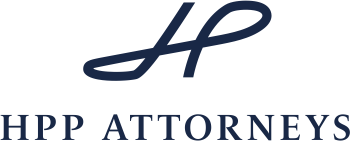The International Convention for the Control and Management of Ships’ Ballast Water and Sediments, adopted by the IMO (International Maritime Organization) in 2004, will enter into force on 8 September 2017. The Convention specifies standards for ballast water and sediments management to follow. It applies, in principle, to all ships in international traffic. The Convention does not apply to vessels which only operate in waters under the jurisdiction of a state,[i] e.g. to Finnish flagged vessels which only sail in waters under Finnish jurisdiction.
Impacts on the environment
The purpose of the Ballast Water Management Convention is to prevent and reduce transferring invasive species through ballast water and sediments from one water area to another, as invasive species cause damage to the environment, biological biodiversity and even to human health. To maintain stability and maneuverability, vessels load ballast water at a cargo discharging port and discharge it at a cargo loading port. Consequently, invasive species are transferred through ballast water from a port to another. Ballast water is also operated during cargo handling to control trim, list and stresses of the vessel.
Impacts on shipowners
Each vessel which the Convention applies to shall be surveyed and carry a certificate onboard which indicates that requirements of the Convention are fulfilled. A type-approved BWTS (Ballast Water Treatment System) shall be installed onboard existing tonnage at the first IOPP (International Oil Pollution Prevention) renewal survey after 8 September 2017, i.e. the latest day to install a BWTS varies among vessels. However, to enable more flexible implementation of the Convention, Trafi (the Finnish Transport Safety Agency) allows for de-coupling the IOPP certificate from the Harmonized System of Survey and Certification with an exceptional permission.[ii]
Each vessel shall have a Ballast Water Management Plan, the minimum content of which is defined in Regulation B-1. Onboard a Finnish flagged vessel, the Plan shall be approved by Trafi or an authorized classification society. Furthermore, a record shall be kept of each ballast water operation as specified in Appendix II of the Convention, for which each vessel shall carry a Ballast Water Record Book onboard.
The Convention requires vessels to either exchange ballast water in accordance with Regulations B-4 and D-1, or treat ballast water before discharging it in accordance with the Ballast Water Performance Standard laid down in Regulation D-2. However, ballast water exchange is only a temporary option until all ships have a BWTS onboard.[iii]
In the Baltic Sea area, ballast water is not possible to exchange as required,[iv] due to the fact that there are no such areas where the minimum required distance from the nearest land and depth are met.[v] This means that when a vessel is operating in the Baltic Sea area, ballast water shall be treated with a BWTS once the vessel has installed one onboard. The low temperature, turbidity and brackish water of the Baltic Sea may also pose challenges to operate a BWTS in the Baltic Sea area.[vi]
Required investments from shipowners – Possibilities for the industry
Investment costs of a ballast water treatment system vary among vessel types and sizes. Trafi has evaluated the amount of investment to be between 120,000 and 1,100,100 euros per BWTS when the treatment capacity of a BWTS is between 300 and 5,000 cubic meters of ballast water per one hour.[vii] In addition, a BWTS causes i.e. maintenance and annual operating costs to shipowners.
On the other hand, the Convention will have and has had positive impacts on the marine technology industry; such as on companies involved in manufacturing ballast water treatment systems, shipyards involved in installing the systems and ship design offices.[viii] Wärtsilä Water Systems Ltd, Panasonic Environmental Systems & Engineering Co., Ltd. and Samsung Heavy Industries Co., Ltd., to name a few, provide type-approved ballast water treatment systems for vessels.[ix] We are of course glad to see that also Finnish companies are represented among the names.
Exceptions and exemptions
Nevertheless, the Convention provides that vessel safety shall be given priority. Ballast water exchange is not required as regulated if the master of the vessel decides that exchange would threaten the safety or stability of the ship, crew or passengers.[x] It is also worth noting that a vessel shall not be required to deviate from its intended voyage or delay the voyage, in order to exchange ballast water as regulated.[xi]
Furthermore, the states party to the Convention are allowed to grant exemption from ballast water management to a vessel on voyages between specified ports or locations, or to a vessel which operates exclusively between specified ports or locations.[xii] To facilitate administrations and shipowners to identify routes that may qualify for exemptions in the Baltic Sea and North-East Atlantic regions, OSPAR and HELCOM have released an online risk assessment tool, which is available here.
Inspection of vessels
To verify compliance with the requirements of the Convention, a vessel may be inspected by the Port State Control Authorities. Trafi is responsible for Port State Control inspections in Finland, while the ELY Centre (Centre for Economic Development, Transport and the Environment) has responsibility for supervision of sediment reception facilities in Finnish ports.
The Port State Control inspection is primarily carried out as a documentary check by Trafi, but the Port State Control may also include a sampling of the ship’s ballast water.[xiii] It is recommended that shipowners and their crew familiarize themselves with the IMO guidelines for Port State Control under the BWM convention (MEPC.252(67)), which provide detailed procedures for inspections. The guidelines are available here.
After all, ballast water management is not a new phenomenon. National rules restricting ballast water exchange locally have been applicable previously[xiv] and are still to be applied in some states, while this is the first international ballast water management convention. However, the USA has not ratified the Convention and has its own regulations on ballast water management to be taken into consideration when a vessel is operating in waters within the jurisdiction of the USA. This is likely to cause confusion amongst shipowners and operators.[xv]
Partner Nora Gahmberg-Hisinger
Trainee Alexandra Kauppi
[i] See Article 3 of the Convention.
[ii] Decoupling ships’ IOPP certificates from the Harmonized System of Survey and Certification, News of Trafi, published on 2 February 2017.
[iii] Government proposal 122/2015, p. 39. Available here (in Finnish) or here (in Swedish).
[iv] See paragraphs 1–2 of Regulation B-4 of the Convention.
[v] Government proposal 122/2015, p. 6.
[vi] Statement of the Environment Committee 1/2016, p. 3, available here (in Finnish) or here (in Swedish) and e-Newsletter of Trafi, published on 4 January 2017, available here (in Finnish).
[vii] Evaluating the costs arising from new maritime environmental regulations, Trafi Publications 24/2013, p. 33. Available here.
[viii] Government Proposal 122/2015, p. 13.
[ix] Lists of Ballast Water Management Systems, which received type-approval certification (updated in November 2016). Available here.
[x] See paragraph 4 of Regulation B-4 of the Convention.
[xi] See paragraph 3 of Regulation B-4 of the Convention.
[xii] See Regulation A-4 of the Convention.
[xiii] Literature Review for the Indicative Ballast Water Analysis Methods, Trafi Publications 10/2017, Summary. Available here.
[xiv] Dandu Pughiuc: Invasive species: ballast water battles, Seaways 11/2010, p. 5. Available here.
[xv] Eva Grey: IMO vs USCG: navigating the differences in ballast water regulation, published on 7 April 2016. Available here.


